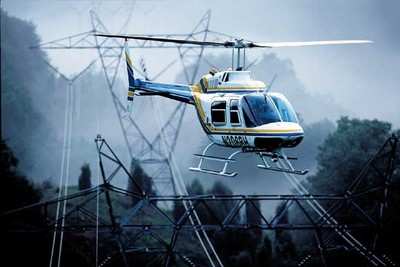But Report Also Questions Pilots' Decision Making In Accident
The NTSB has released its probable cause report in an accident which occurred October 15, 2010 in which a Missouri Highway Patrol helicopter ran out of fuel and went down, resulting in the fatal injury of the pilot, the sole occupant of the aircraft. While fuel exhaustion is listed as the probable cause, the report also calls the pilot's decision-making into question. He had a history of what the FAA calls "disqualifying" medical conditions.

NTSB Identification: CEN11GA020
14 CFR Part 91: General Aviation
Accident occurred Friday, October 15, 2010 in Clarkson Valley, MO
Probable Cause Approval Date: 03/08/2012
Aircraft: BELL 206B, registration: N96MP
Injuries: 1 Fatal.
During the flight that preceded the accident flight, the pilot stated to one of the two officers aboard the helicopter that he would not be able to fly for as long as normal because he needed to obtain fuel. Upon completion of the observation flight, the pilot returned to the police department and shut down the helicopter to allow the two officers to exit. The pilot then restarted the helicopter and departed en route to an airport where he could refuel the helicopter. A witness near the accident site stated that he heard the helicopter’s engine sputter and stop and saw the main rotor separate from the helicopter. The helicopter entered an uncontrolled descent and impacted terrain.
Postaccident examination of the helicopter revealed that there was no usable fuel on board and that the main rotor mast separated as a result of overload due to mast bumping (main rotor hub to rotor mast contact). No preimpact mechanical anomalies that would have precluded normal operation of the helicopter were noted. Mast bumping typically results from a low-G flight condition caused by the pilot pushing the cyclic control forward abruptly from either straight-and-level flight or after a climb. Pushing the cyclic forward abruptly is contrary to the appropriate actions for entering an autorotation, which are lowering the collective pitch control to the full down position, adding antitorque pedal as needed to maintain heading, and applying cyclic as needed to maintain proper airspeed.

Review of the pilot’s medical records indicated that he had a history of depression, anxiety, and obstructive sleep apnea. Each of these conditions had been documented and treated since 2007, and none were reported to the Federal Aviation Administration (FAA) on the pilot’s airman medical application in 2010 or earlier. Any of these conditions may have disqualified the pilot from obtaining an airman’s medical certificate. Postmortem toxicological testing indicated that the pilot was taking alprazolam, an anti-anxiety medication, and venlafaxine, an anti-depressant. Alprazolam is one of a class of drugs which may worsen obstructive sleep apnea, and venlafaxine can cause fatigue and dizziness. The fact that the blood level of venlafaxine found was higher than normal therapeutic levels makes it more likely that the side effect of dizziness occurred and impaired the pilot’s performance.
The National Transportation Safety Board determines the probable cause(s) of this accident as follows:
The total loss of engine power due to fuel exhaustion, which resulted from the pilot's inadequate preflight planning and decision-making, and his improper control inputs following the loss of engine power, which resulted in mast bumping and separation of the main rotor. Contributing to the accident was the pilot's improper judgment in acting as a pilot with disqualifying medical conditions. (Flie photo of Bell 206B)
 ANN's Daily Aero-Linx (05.06.25)
ANN's Daily Aero-Linx (05.06.25) ANN's Daily Aero-Term (05.06.25): Ultrahigh Frequency (UHF)
ANN's Daily Aero-Term (05.06.25): Ultrahigh Frequency (UHF) ANN FAQ: Q&A 101
ANN FAQ: Q&A 101 Classic Aero-TV: Virtual Reality Painting--PPG Leverages Technology for Training
Classic Aero-TV: Virtual Reality Painting--PPG Leverages Technology for Training Airborne 05.02.25: Joby Crewed Milestone, Diamond Club, Canadian Pilot Insurance
Airborne 05.02.25: Joby Crewed Milestone, Diamond Club, Canadian Pilot Insurance




